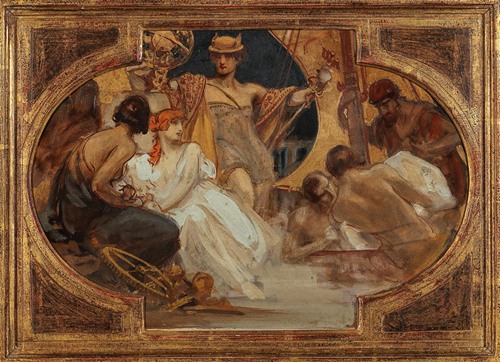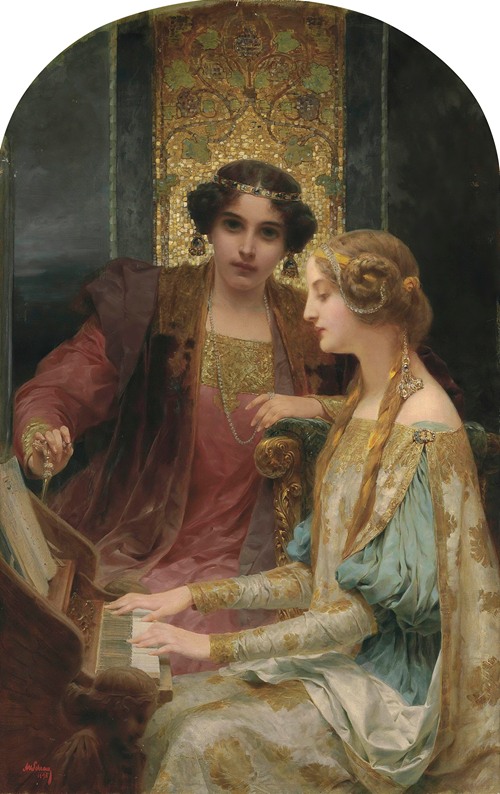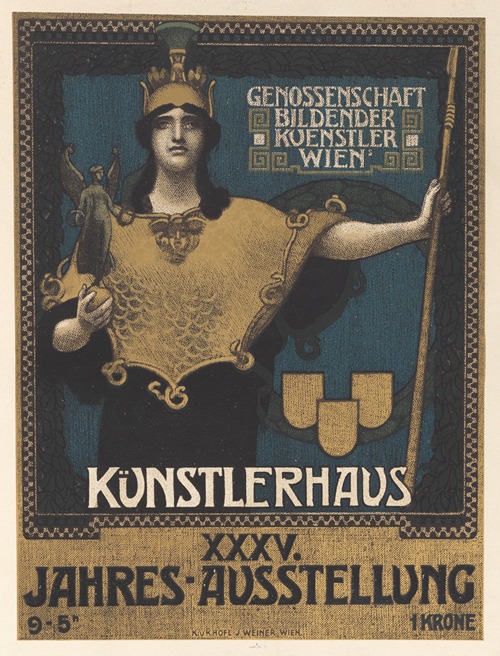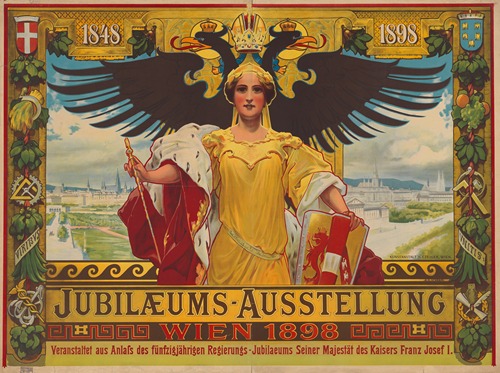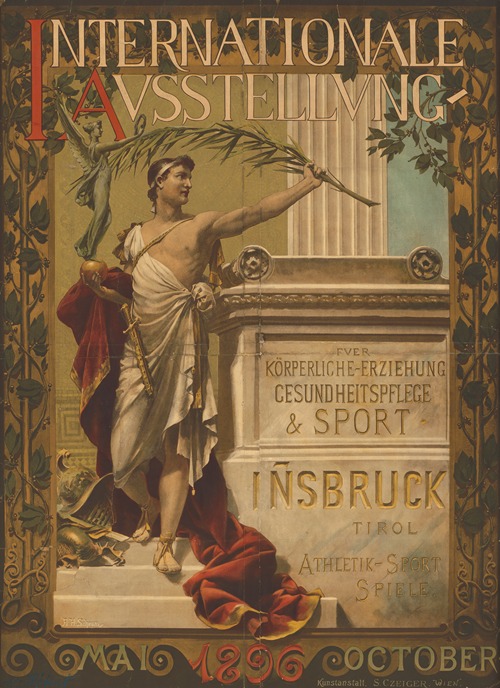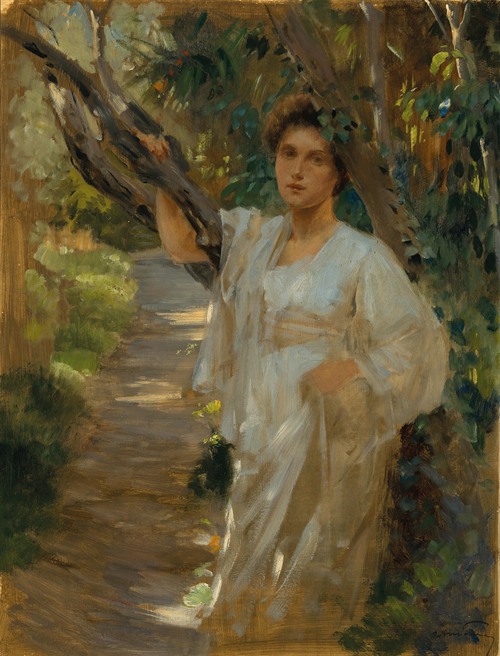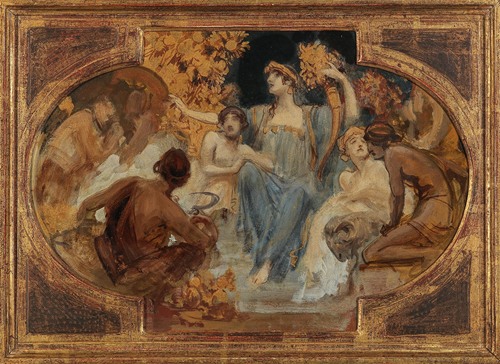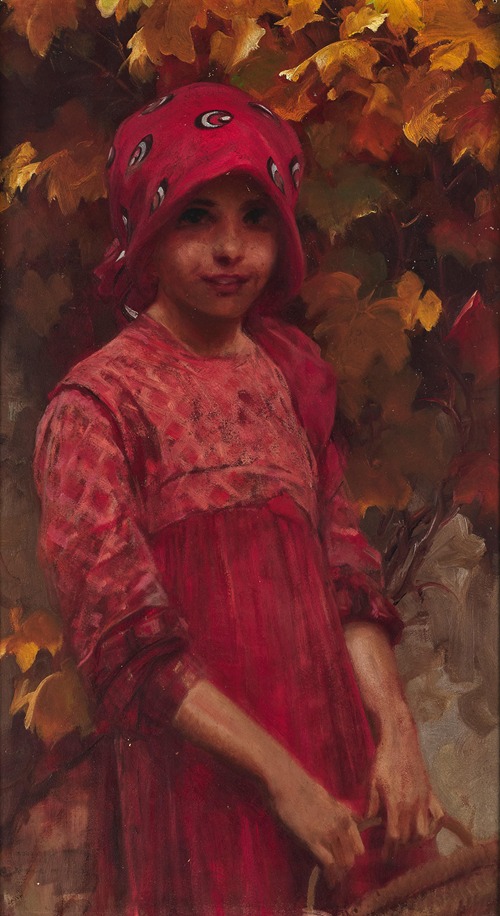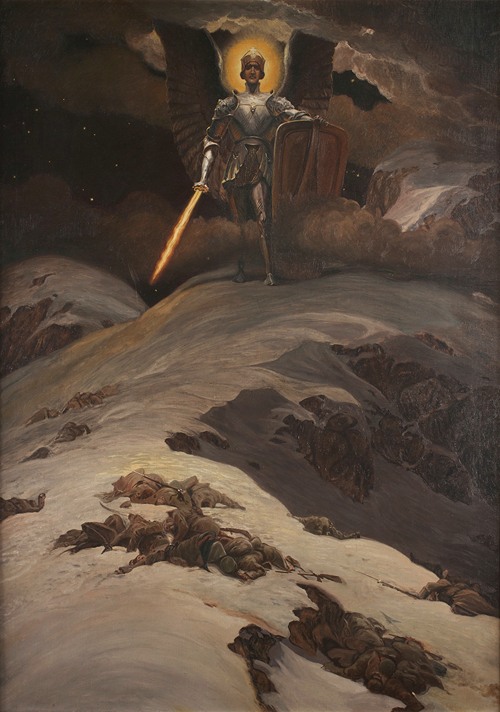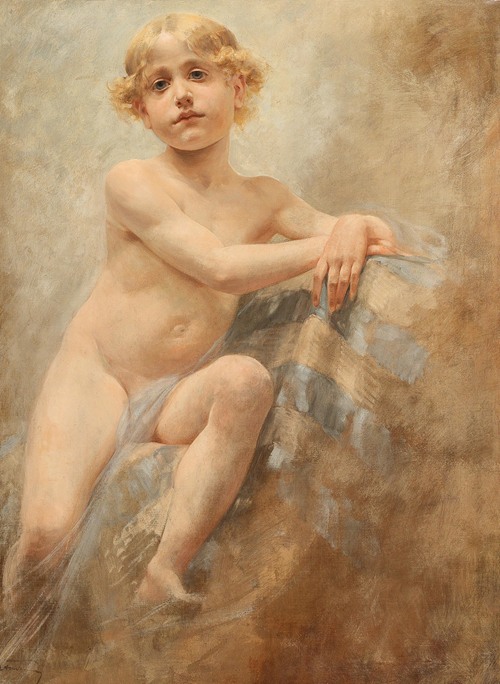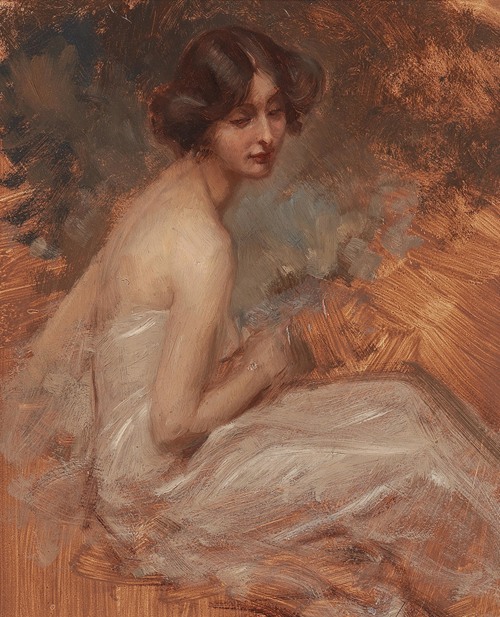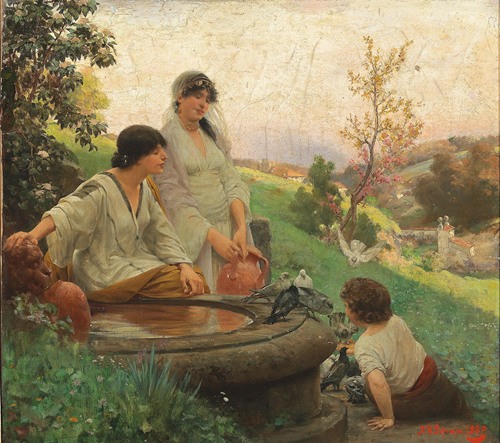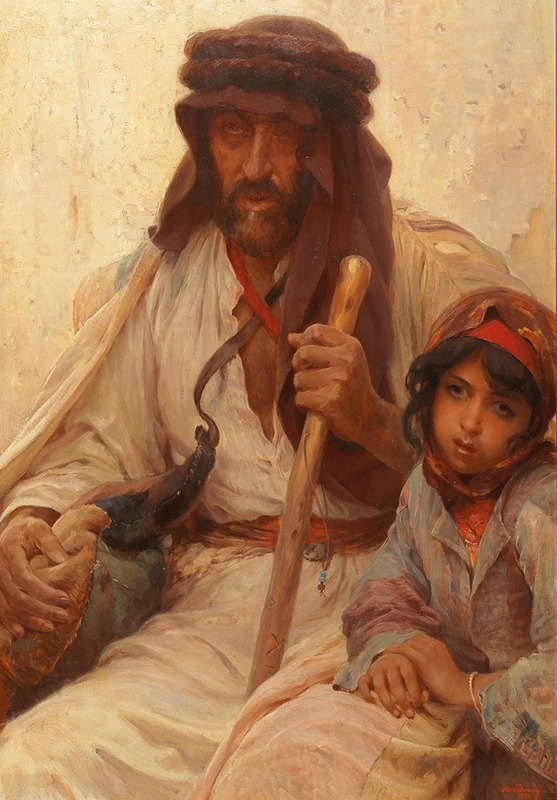
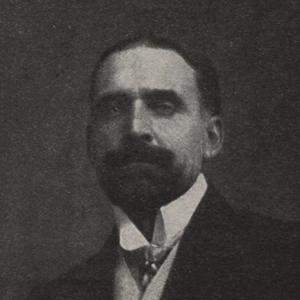
Alois Hans Schram was an Austrian portrait, history and decorative painter. Much of his work is in the Art Nouveau style, although many later works may be classified as Neo-Baroque.
Alois Schram's father was a councilor for the postal service. From 1879 to 1888, he studied at the Academy of Fine Arts, Vienna. His primary instructors there were Carl Wurzinger, Hans Makart and Josef Matyáš Trenkwald.
Schram was awarded the Goldene Füger-Medaille [de] for Composition (1881), and the Spezialschulpreis (1887, for a scene from the life of Bianca Cappello, now at the Denver Art Museum). After graduating, he was granted the Staatspreisstipendium (1890/1891), a scholarship that enabled him to continue his studies in Rome.
When Schram returned, he worked as a portrait and decorative painter in Vienna. During the 1890s, he visited several other European and Middle Eastern countries.
From 1909 to 1911, Schram created allegorical friezes in the Austrian Parliament Building. In 1915, he did a series of ceiling paintings in the ballroom of the Hofburg. Outside of Vienna, he worked at the Palazzo Vivante in Trieste and the judicial building in Salzburg.

